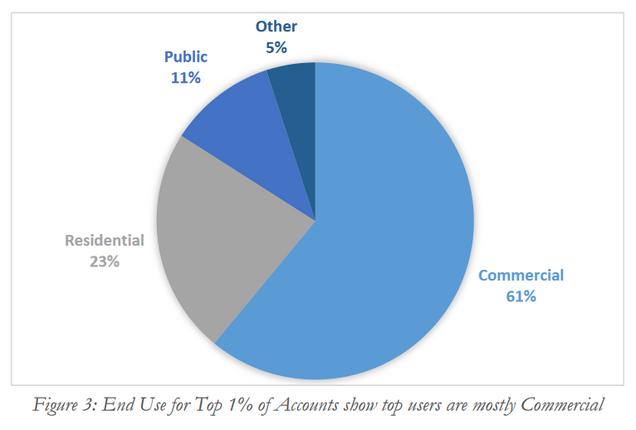Imagine a Day Without Water: ISE Releases Case Study Evaluating Better Water Conservation Strategies
Do better water conservation strategies exist for utilities to manage user demand—alternatives that are quick and low-cost to implement, more effective, and could even lower customer water bills for everyone?
Guest blog post for the Mitchell Foundation: Imagine a Day With One Water, by ISE Executive Director Jacqueline Ashmore
As the Boston University Institute for Sustainable Energy (ISE) joins today’s national education campaign “Imagine a Day Without Water,” our just-released case study with New Braunfels Utilities (NBU) in Texas points to a new best practice, one that rethinks conventional, broader outreach programs: highly targeted water conservation efforts specifically geared toward top-consuming customers.
Key takeaways from New Braunfels:
- The top 1% of water users represent 27% of the total water demand, meaning water conservation programs focused on this group could be much more targeted, customized, and effective.
- Instead of asking tens of thousands of residential accounts to reduce water usage by 10%, ask a few hundred high-demand accounts to reduce water usage by 30% to achieve the same total reduction.
- These top consuming accounts not only make up a large portion of total water use, but also have the potential for large efficiency gains, e.g. commercial users who are also invested in reducing their costs from water usage.
 With this in mind, ISE has outlined a utility-scale outreach program that pays for itself while achieving water-saving goals. It’s a win-win for the utility and customers, resulting in lower water bills and increased customer satisfaction, improved water conservation for growing populations, and deferred infrastructure upgrades.
With this in mind, ISE has outlined a utility-scale outreach program that pays for itself while achieving water-saving goals. It’s a win-win for the utility and customers, resulting in lower water bills and increased customer satisfaction, improved water conservation for growing populations, and deferred infrastructure upgrades.
Even better, this customized approach lays the groundwork for the water utility of the future by encouraging technology investments that would enable all customers to receive customized rebates and recommendations for water conservation.
Report authored by Michael Grinshpun, Jacqueline Ashmore, and Josef Benzaoui of the Boston University Institute for Sustainable Energy. The work was carried out as part of a broad initiative on One Water opportunities in Texas funded by the Cynthia and George Mitchell Foundation.